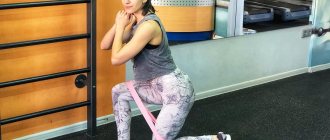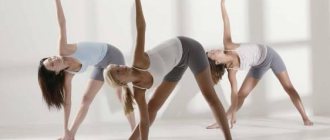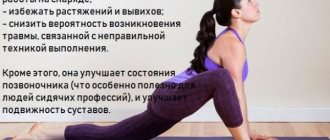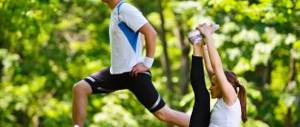Author: Timko Ilya - the ruler of the entire site and fitness trainer | more details >> Rod. 1984 Trained since 1999 Trained since 2007. Author and creator of the site tvoytrener.com. CCM in powerlifting. Champion of Russia and South Russia according to AWPC. Champion of the Krasnodar region according to IPF. 1st category in weightlifting. 2-time winner of the Krasnodar Territory championship in t/a. Author of more than 700 articles on fitness and amateur athletics. Author and co-author of 5 books.
Place in the author rating:
out of competition
(become an author) Date: 2016-12-22 Views: 138,607 Rating: 4.9
| All articles by the author >> | Medals articles >> |
Articles are loading...
| Article medals: | more than 100 thousand views |
Why medals are given to articles:
| Bronze medal: | |
| 1. The article is in the TOP 100 2. The article has more than 3. The article has more than 100 | |
| Silver medal: | |
| 1. The article is in the TOP 50 2. The article has more than 3. The article has more than 500 | |
| Gold medal: | |
| 1. The article is in the TOP 10 2. The article has more than 1 3. The article has more than 1,000 | |
This is a video article. The entire article is presented in this video. Below is just a text transcript of the video. Enjoy watching!))
The importance of warming up
Many beginners and some experienced athletes often skip the warm-up, starting classes with basic exercises. This is a fundamentally wrong approach. Warming up before training is not just an integral part of sports training, but its most important element. It prepares the body for upcoming stress. Consequently, how effective the lesson will be directly depends on the warm-up.
You need to start a good workout only with warm-up exercises. It is a mistake to consider their implementation a waste of time. Basically, this opinion is based on the belief that during warm-up there is no muscle tissue building or weight loss. Things are a little different. If the warm-up is done correctly, it helps to accumulate a large amount of strength required for pumping up muscles, or performing weight-loss exercises when a person wants to get rid of extra pounds.
The set of exercises included in the warm-up solves a wide range of problems:
- prepares both the muscular and skeletal systems, as well as all organs involved in the training;
- provides aerobic exercise, saturates muscles with oxygen and blood;
- dilates capillaries, strengthens the pulse, preparing blood vessels and heart muscle for stress;
- prevents injury while lifting heavy weights or working on exercise equipment;
- provides an additional release of testosterone with adrenaline;
- tones the sympathetic nervous system;
- accelerates cellular metabolism;
- increases the elasticity of muscles and ligaments;
- increases joint mobility;
- accelerates the transmission of nerve impulses;
- allows you to fully concentrate on the upcoming workout.
A high-quality warm-up before training helps to achieve the goal set for the athlete. If this is strength training, then the right attitude and preparation of the body allows you to do the exercises with maximum impact and lift a lot of weight. For fitness classes, the role of warm-up exercises is also great. They give confidence to every movement, make the body even more agile, and increase flexibility.
Warm-up before training at home for girls
If you vigorously warm up your body and all your muscles, you will fully prepare yourself for the subsequent load. As you can guess, you will be less tired and, accordingly, you will be able to do more approaches and a longer workout, which will ultimately lead you to getting results. How does this warm-up exercise work?
Photo from the site sunny7.ua
All these exercises should increase your heart rate, increase blood flow through muscle tissue and, very importantly, in order for your joints to withstand the load without problems, joint lubrication must be released, which will not allow them to overstrain. All this together will help you protect your body from unexpected injuries.
Well, now let's talk more specifically.
Choosing the right warm-up
It’s not enough to just do warm-up exercises; you also need to choose them correctly. There is no single and universal system that is suitable for this or that training. The athlete must independently find the ideal complex for himself, selecting exercises that maximize potential and help achieve his sporting goals. It is necessary to take into account not only the type of sport, but also physiological individual characteristics.
An important role is played by physique, degree of joint mobility, condition of ligaments, as well as other factors that influence which organs and muscles need more attention. You need to have a clear idea of the expected result. A warm-up can serve to lightly warm up the body or fill a specific muscle group that will be involved in training with blood.
Each athlete, of course, decides for himself what the warm-up will be. The main thing is to know both the theoretical and practical basis. This, first of all, concerns the idea of various sets of warm-up exercises.
Warm-up happens:
- General . Serves to warm up and prepare the body.
- Special . It is usually performed before a specific exercise and has similar features to training movements.
- For stretching . Increases muscle stretchability and joint mobility.
The most universal, that is, suitable for almost everyone, is considered a general (classical) warm-up. It also includes stretching.
Warm up before exercise how to do / Yaroslav Brin
Dynamic and static warm-ups: pros and cons of each
Everyone is accustomed to warming up like in old Soviet films - these are “stretches”, in other words, this is stretching. But the question arises: how similar are stretching and warming up? Are they the same thing, or is there a difference in the understanding of these words? Recently, professional trainers have argued that these two concepts are not similar to each other. Let's figure out why. This conversation directly relates to what kind of workout you plan after you warm up. Cardio warm-up before training video:
If you are expecting a strength load and want to increase your strength levels, you will need a dynamic warm-up. What it is? We are all familiar with the word dynamics, and it is obvious that this warm-up does not imply smooth and measured body movements, as well as not static positions. To prepare your body for strength training, you need fairly vigorous exercises; they will maximally help prepare the body for the subsequent load on the muscles.
Photo from turnichok.ru
You will be interested to know that studies have been conducted on army personnel, and after such an exercise, the heart rate increases, the body temperature rises, the muscles become elastic, and the joints begin to move much better. In addition, nerve conduction increases and muscles become more responsive to stress. What conclusion can we draw from this study? The body perceives the training better and the result for which you are trying so hard will be more noticeable. Warm-up before training at home video:
If you do stretching, yoga or any other exercises that do not require large strength investments, of course it will be better for you to use the old method - warm up your muscles, do some stretching, and then proceed to the main block of the lesson.
Important
The warm-up should correspond to the chosen direction of home training.
Below we will answer the question of how to warm up before training if you are seriously planning to “lift” a barbell or pick up your home dumbbells.
Classic warm-up
It is a set of the following exercises:
- aerobic - running, jumping rope;
- to warm up the muscles of the torso, legs, arms;
- to increase the degree of mobility and flexibility of joints.
Important to remember
All dynamic warm-up exercises, including running and jumping, should be performed without muscle tension or any force. The pace should be kept average. This does not mean that they should be slow and apathetic. This kind of warm-up is called “sluggish.”
Along with jumping and running, general warm-up involves doing:
- squats;
- tilts;
- rotation of the body;
- exercises in a lying position;
- knee lift;
- walking in place.
Stretching procedure
The complex is a set of exercises, each of which is aimed at working a specific muscle group:
- Shoulders . Lower your chin, press it to your chest, tilt your head back. Also perform neck rotations.
- Breast. Place your palm on the wall, lean forward and slightly to the side so that you feel tension, hold for a while, then do the same procedure in the other direction. An excellent way to cope with the task is to stretch your clenched hands up behind your back.
- Back. Use a post or pole. Grasp it with one hand, pull your body back, straightening your legs so that you feel both stretching and tension. Stay a little in the final position, repeat similar actions on the second half of the back muscles.
- Belly . Place your hand bent at the elbow joint on your belt, and stretch your free one up, lean to the side, while trying to extend your raised hand as far as possible. Change hands, do the same actions, but in the opposite direction.
- Shoulders . Raise your arms to shoulder level. Rotate the upper part of the body until it stops, changing sides alternately.
- Legs . Lunge your legs back, forward, to the sides. When walking backwards, bend your other leg at the knee joint. Side lunges differ only in the direction of movement; forward lunges differ in the length of the step, which should be maximum.
- Anterior thigh muscles . Raise your leg back, clasp it with your hand at the ankle.
This complex contains ideally balanced exercises that allow for high-quality warm-up and stretching of all major muscle groups. Its implementation before training will affect the productivity of classes. They will become more efficient and effective. The general recommended warm-up duration is a quarter of an hour. Spending more time is likely to cause premature fatigue.
Warm up before running, cycling and swimming
Video No. 1
A basic dynamic warm-up can consist of the following simple exercises:
- Lunge - Warms up the core muscles, increases the flexibility of the Achilles tendons and improves hip mobility.
- “ Toy Soldier” - warms up the muscles of the buttocks, hamstrings and quadriceps muscles.
- Lateral Lunge - activates the glutes and adductors.
- Star Touch - Increases flexibility in the hamstrings and glutes.
- Runner 's Touch - Activates the core muscles and increases flexibility in the hamstrings and glutes.
All of the above exercises are performed 10 times on each side.
Warm up before running
Warming up is required both during exercise in the gym and when running. Warm muscles are the main key to a successful run. Both professionals and amateurs practice running. Therefore, the question of what a proper warm-up should be is quite relevant.
It is best to start warming up before a run by walking at a distance of 100 to 200 meters, gradually increasing the pace. To increase the speed of blood supply, you need to swing your arms, bend back, forward, to the left and right sides. It is recommended to complete the warm-up with squats. An alternative option would be to jog for two or three minutes.
These fairly simple exercises do not cause any difficulties in performing, quickly become a habit for runners, allow you to increase your performance and running time, and protect you from the risk of injury.
Igor August 13, 2016











